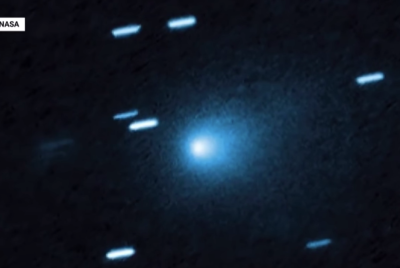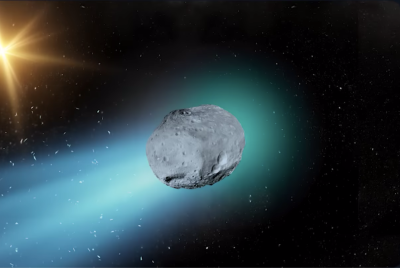3I/ATLAS Defies Science: Interstellar Object's Shape, Signals and Age Baffle Astronomers
3I/ATLAS baffles scientists as it changes shape and emits mysterious radio signals, challenging current interstellar theories.

A distant visitor from the depths of interstellar space has captured the imagination of scientists and stargazers alike. Known as 3I/ATLAS, the mysterious object has displayed a combination of features that challenge conventional understanding of cosmic behaviour and composition.
An Object That Breaks the Rules of Physics
When 3I/ATLAS was first detected, astronomers classified it as a comet due to its luminous trail and apparent disintegration. Recent high-resolution images, however, have revealed that the object's structure is anything but ordinary.
Observations show sections of its body breaking apart and shifting shape while continuing along the same path, suggesting complex internal forces are at play. This fragmentation has created puzzling inconsistencies between the object's estimated mass and the amount of light it reflects.
Energy measurements indicate a density far greater than that of typical cometary material, prompting speculation that its core could contain metallic or composite elements rather than ice and rock. The discovery has forced experts to reconsider assumptions about how such bodies form and survive the harsh conditions of interstellar travel.
Adding to the confusion, instruments that captured images of 3I/Atlas registered a striking blue hue across several frames. Subsequent analysis determined that the object's true colour has remained stable, meaning the blue tint likely resulted from solar reflection or sensor distortion. This revelation dispelled early rumours of unusual emissions, though it underscored how unpredictable and difficult the object has been to study with existing tools.
Unexplained Radio Signals Deepen the Mystery
🚨 BREAKING: First Radio Signal Detected from 3I/ATLAS
— Skywatch Signal (@UAPWatchers) November 8, 2025
At 04:10 UT, Oct 24 2025, South Africa’s MeerKAT Radio Telescope captured the first confirmed radio absorption lines from the interstellar object 3I/ATLAS marking the object’s official radio detection milestone.
According… pic.twitter.com/3LfHXIUt1c
The intrigue surrounding 3I/ATLAS intensified when multiple observatories reported detecting radio signals originating from its vicinity. These emissions, while faint, displayed a rhythmic pattern not typically associated with natural space phenomena. Researchers have since spent weeks cross-checking the data to determine whether the readings were caused by interference or genuine activity from the object itself.
Preliminary findings suggest that the signals could stem from ionised gases or charged particles interacting with solar radiation. Still, the precise cause remains uncertain, as no other interstellar body has ever exhibited such consistent radio behaviour.
The discovery recalls earlier debates surrounding ʻOumuamua', the first known interstellar visitor, though 3I/ATLAS appears even more anomalous in both structure and emission profile. While most astronomers maintain that the signals likely have a natural origin, they acknowledge the importance of further analysis.
The combination of shifting physical characteristics and unexplained energy output makes 3I/Atlas a prime candidate for ongoing investigation. Research teams continue to monitor the object's movement and composition, hoping to isolate whether the signals result from internal chemical reactions, surface interactions, or an entirely new astrophysical process.
Older Than the Solar System Itself

Spectral analysis of the object's light patterns has produced another remarkable finding: 3I/ATLAS appears to be ancient, possibly predating the formation of the solar system. Chemical traces suggest that the object originated from a region of space where heavier elements were abundant, pointing to a stellar system that may have collapsed billions of years ago.
If confirmed, 3I/ATLAS would represent one of the oldest known interstellar travellers ever observed, a fragment of an extinct world making a rare passage through our cosmic neighbourhood. Its trajectory indicates that it has likely been wandering the galaxy for aeons, shaped by gravitational encounters with stars and other celestial bodies.
Early in its observation, the object was mistakenly linked to Comet Borisov during a close Earth approach, causing brief confusion among astronomers. That error was quickly corrected, but it highlighted the challenges of tracking fast-moving interstellar visitors and distinguishing them from local comets. As 3I/Atlas continues its passage, scientists are determined to gather as much information as possible before it fades from view.
3I/ATLAS remains one of the most perplexing discoveries in modern astronomy. Its unpredictable shape, unexplained radio emissions, and ancient origin suggest a story far deeper than a simple cometary encounter. For researchers, it represents both a scientific challenge and a glimpse into the universe's distant past, where the boundaries between what is known and what is possible continue to blur.
© Copyright IBTimes 2025. All rights reserved.



















